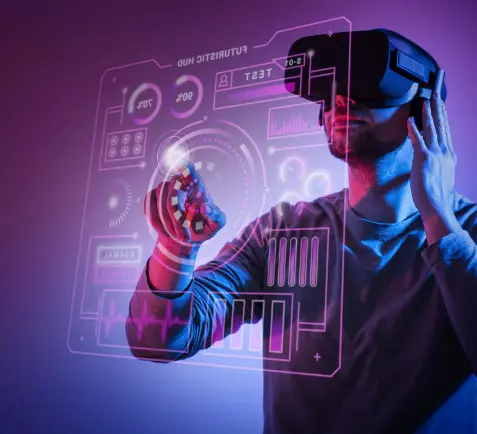Smart technology in healthcare marks is set to make a significant improvement in patient care. In the US, advancements in digital health technologies such as AI, the Internet of Things (IoT), telehealth, and wearable devices are already revolutionizing how healthcare providers approach diagnosis, treatment, and patient management.
According to recent studies, medical errors are the third leading cause of death in the United States causing up to 251,000 deaths annually. Thankfully, these digital health trends will diminish human errors, enhance the quality of care, streamline operations, reduce costs, and improve access to healthcare services across the population.
As the healthcare industry embraces these exciting innovations, understanding the role and impact of smart technology is essential in every area, from audiology and eye care to dental and diagnostics.
The Role of Smart Technology in Healthcare
Hospitals worldwide are suffering from staff shortages and lack of treatment access. Advanced digital tools and systems will tackle these issues by leveraging data, connectivity, and automation to improve healthcare delivery and, ultimately, patient outcomes. These technologies have various applications, from electronic health records and telemedicine to wearables and AI-powered diagnostic tools. Thanks to the power of these innovations we’re about to see a more equitable society with personalized, efficient, and effective healthcare for all.
Telehealth and telemedicine
The rise of telehealth and telemedicine has been one of the most significant shifts in healthcare delivery, especially during the pandemic. Patients can receive medical consultations and follow-up care remotely, significantly expanding access to healthcare services, particularly for individuals in rural or underserved areas.
Wearable health monitoring devices
Wearables such as fitness trackers, glucose monitors, and smartwatches enable continuous monitoring of health metrics in real-time. These devices are typically worn by people with chronic diseases and studies show that 30% of hospital visits by patients with common conditions are unnecessary. Luckily, ongoing monitoring can alert healthcare providers to potential health issues before they become serious, allowing for proactive management of chronic conditions and overall health without overwhelming hospitals.
Artificial intelligence and machine learning
AI in healthcare offers exceptional precision in diagnostics, treatment plan development, and even in predicting patient outcomes. The benefits of AI in healthcare include analyzing vast amounts of data to identify patterns and insights that would be difficult for humans to discern, leading to more accurate diagnoses and personalized treatment plans.
Blockchain in healthcare
Blockchain technology enhances the security, privacy, and efficiency of health data exchange. Providing secure records of transactions, blockchain can facilitate a transparent and reliable exchange of medical information among healthcare providers, payers, and patients.
Electronic health records
Fast and accurate data access has transformed how patient records are stored, accessed, and used across the healthcare system. By digitizing these records, healthcare providers no longer have to waste time sourcing and authenticating patient information, facilitating better-informed decision-making and more coordinated care.
Benefits of Smart Technology in Healthcare
Thanks to smart technology, the world is becoming more advanced in many areas – including the healthcare industry. Patients and healthcare workers alike can enjoy a multitude of benefits, including efficient and effective medical services. With improved patient care and optimized everyday operations, these benefits lead to significant cost savings and increased satisfaction overall.
Fast, efficient operations
AI in healthcare provides better administrative and clinical processes, reducing the time and resources typically required for routine tasks. Electronic health records, for example, have eliminated paper documentation, making patient data easily accessible and shareable among healthcare professionals. The automation of scheduling, billing, and inventory management also reduces administrative strain, giving medical staff more time to focus more on patient care. Another way healthcare providers can minimize costs and maximize efficiency is by monitoring overall equipment effectiveness. OEE assesses the effectiveness of medical equipment and technologies, ensuring they are available, reliable, and performing at their optimal capacity. By monitoring and improving OEE, healthcare facilities can reduce equipment downtime, enhance patient care, decrease delays in diagnosis or treatment, and ensure a higher return on investment in medical technology.
Improved patient care and satisfaction
Access to healthcare is something that the world has struggled with for decades. But thanks to telehealth services and wearable health monitoring devices, providers can now give personalized patient care outside of traditional clinical settings. Quality of care, increased patient engagement and satisfaction are some benefits of AI in healthcare, providing patients with greater control over their health and well-being. While trained human healthcare workers offer excellent services, smart technology can greatly enhance them. AI-driven diagnostics and treatment produce high-degree precision and personalization, leading to better health outcomes.
Reduced healthcare costs
One of the barriers to receiving correct, quality healthcare is finances. Luckily, smart technology is significantly reducing healthcare costs in many ways. For instance, telehealth decreases the need for in-person visits, saving money for healthcare providers and patients. Predictive analytics and real-time health monitoring can prevent costly emergency interventions by identifying potential health issues before they escalate. Plus, AI and machine learning optimize resource allocation, ensuring that healthcare services are delivered more cost-effectively.
Improved accuracy in diagnostics
Traditionally, coming to an official diagnosis can take a long time due to inspecting data and cross-examinations. Sometimes, this can lead to inaccuracies or late diagnosis with little room for treatment. Fortunately, AI in healthcare and machine learning algorithms can easily analyze large amounts of medical data with incredible accuracy and speed, outperforming the usual methods we use to identify diseases and predict outcomes. For instance, AI algorithms can more accurately interpret imaging results, leading to earlier and more precise diagnoses of conditions like cancer, cardiovascular diseases, and neurological disorders. Using this accurate data, healthcare providers can plan personalized treatments and provide better overall patient care.
Challenges and Considerations
While smart technology in healthcare brings many advantages, it also presents some challenges. Privacy and security concerns are critical, as the increased digitization of health information raises the risk of data breaches. Ensuring the equitable distribution of these technologies is crucial to avoid widening the health disparity gap. But, there’s a need for comprehensive training for healthcare professionals to adapt to these new technologies effectively. Overcoming these barriers requires thoughtful policy-making, strong security measures, and ongoing education.
Optimizing Healthcare
As digital trends suggest, smart technology will boost efficiency in the USA by improving every area of healthcare, from diagnostics to disease prevention. Despite challenges, the potential benefits are vast and exciting. To learn more about smart technology in healthcare and other industries, speak to our professional team at Mantra Labs for more information today.
Knowledge thats worth delivered in your inbox




